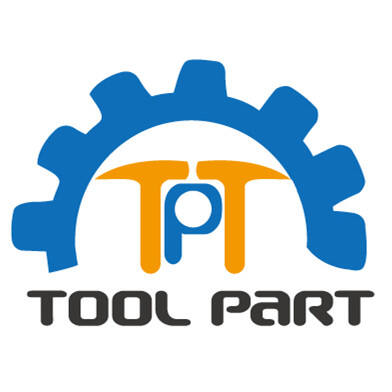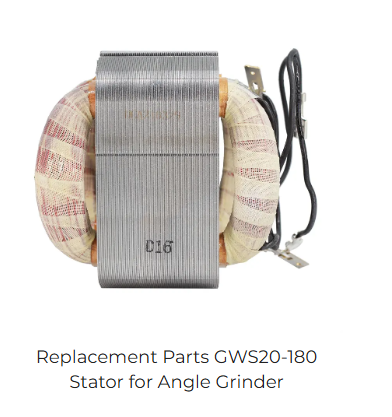과열과 열적 열화 스테타터 권선
과도한 열이 절연 파괴를 가속화하는 방법
스테이터 권선이 과도하게 가열되면 권선을 감싸고 있는 절연 재료에 문제가 발생하며, 이는 성능과 수명에 직접적인 영향을 미칩니다. 연구에 따르면 온도 변화와 관련해 흥미로운 사실이 밝혀졌습니다. 온도가 약 10도 섭씨 상승하면 절연체의 수명은 절반으로 줄어듭니다. 폴리에스터나 에폭시 수지 같은 절연 재료는 모두 견딜 수 있는 최대 온도 한계가 존재합니다. 이 한계를 넘어가면 미세 균열이 생기기 시작하여 결국 전체 절연 시스템이 고장 나게 됩니다. 열이 쌓이는 원인을 제대로 이해하는 것이 매우 중요합니다. 과도한 부하나 불량한 전기 연결 등이 원인일 수 있습니다. 열 문제를 유발하는 요소를 파악하게 되면, 발열을 방지하고 스테이터가 수개월이 아니라 수년 동안 제대로 작동할 수 있도록 하는 효과적인 해결책을 마련할 수 있습니다.
냉각 시스템 최적화 기술
냉각 시스템은 물 또는 오일 기반의 시스템이 스테이터의 장기적인 성능에 큰 영향을 미칩니다. 작동 중 온도가 낮게 유지되면 과열로 인한 절연 손상이 늦어지게 됩니다. 이러한 냉각 시스템을 적절히 유지보수하면 대부분의 시간 동안 더 효율적으로 작동하여 예기치 못한 정지가 자주 발생하지 않으며, 절연 관련 문제도 방지할 수 있습니다. 열화상 기술은 잠재적인 핫스팟을 발견하는 데 유용한 도구로, 많은 시설에서 정기 점검에 이러한 모니터링 기술을 도입하고 있습니다. 초기 단계에서 문제를 조기에 발견하면 예상치 못한 상황 없이 시스템이 원활하게 작동하는 데 큰 도움이 됩니다.
조기 경고 신호를 위한 온도 모니터링
센서를 통해 온도를 지속적으로 모니터링하면 절연이 완전히 고장 나기 훨씬 전에 경고 신호를 받을 수 있어 시스템 전반의 신뢰성을 크게 높일 수 있습니다. 온도 한계 설정은 사용 중인 스테이터의 종류와 제작 방식에 따라 달라집니다. 일단 이 한계치가 정해지면 기술자들은 문제가 즉시 주의가 필요한 상황임을 인지할 수 있습니다. 이러한 센서 데이터를 적절한 분석과 함께 활용하면 정비 팀이 조기에 문제를 발견할 수 있는 예방 정비 일정을 수립할 수 있습니다. 예를 들어, 특정 부위에 반복적으로 열이 쌓이는 경우, 작업자들은 고장을 기다리지 않고 해당 부위를 집중 점검할 수 있습니다. 안전성이 향상되는 것은 물론이고 장비의 고장 빈도와 긴급 수리 필요성이 줄어들기 때문에 운영 비용도 절감됩니다.
고정자 절연 고장 예방 전략
바니시 구워내기 및 오염의 영향
바니시의 경화 공정은 절연체가 표면에 얼마나 잘 부착되고, 작동 중 절연 성능을 저하시킬 수 있는 오염물질의 축적을 얼마나 줄일 수 있는지를 결정하는 데 큰 차이를 만듭니다. 절연체가 더 오래 제 위치에 유지될수록 스테이터의 수명도 늘어나게 되며, 이는 적절한 관리가 이뤄지지 않으면 많은 시스템이 금방 고장 나기 때문에 특히 중요합니다. 연구에서는 이러한 요소들을 조사한 결과, 오염된 환경이 실제로 고장률을 상당히 증가시킨다는 것을 발견했습니다. 정기적인 청소 절차가 전혀 이뤄지지 않은 시스템에서는 고장률이 최대 30%까지 증가했다는 보고서도 있었습니다. 제조사 입장에서는 제품이 처음부터 제대로 작동하기 위해 생산 과정에서 부품들을 깨끗하게 유지하는 것이 이제는 선택이 아닌 필수입니다. 단지 오염 수준을 낮추는 것만으로도 이러한 모터들의 장기적인 신뢰성을 크게 개선할 수 있습니다.
열 내구성을 위한 재료 선택
열 스트레스를 견딜 수 있는 소재를 선택하는 것이 스테이터 부품의 수명에 큰 차이를 만듭니다. 우수한 품질의 에폭시 소재는 열피로에 대한 저항성이 뛰어나기 때문에 다른 옵션보다 열 관리와 절연 유지에 더 효과적입니다. 이러한 에폭시는 고온에서도 생존할 뿐만 아니라 스테이터 전체의 성능을 향상시키기도 합니다. 연구에 따르면 이러한 고급 소재는 온도 한계를 상당히 높일 수 있으며, 경우에 따라서는 약 20% 더 높은 온도까지 견딜 수 있습니다. 즉, 날씨나 환경 조건이 변동하더라도 부품이 튼튼하게 유지되어 전체적으로 신뢰성이 높아지고, 유지보수 비용과 시간을 소모하는 절연 고장 문제를 줄일 수 있습니다.
정기적인 절연 저항 테스트
정기적인 절연 저항 테스트를 수행하면 문제가 커지기 전에 조기에 발견할 수 있습니다. 이러한 테스트를 정기적으로 실시함으로써 절연 저항의 예측 불가능한 변화로 인한 문제를 방지할 수 있는 체계적인 유지보수 계획을 수립할 수 있습니다. 정기적으로 이 저항을 모니터링함으로써 기술자들은 다양한 장비 구성에서 정상적인 수준을 파악할 수 있고, 문제 발생 전에 이를 감지하여 사전에 조치를 취할 수 있습니다. 단순히 고장을 예방하는 것을 넘어 정기적인 테스트는 시스템의 일상적인 신뢰성을 높이는 데도 기여합니다. 또한, 스테이터가 오랜 기간 동안 최적의 상태로 작동할 수 있도록 도와주므로 기업이 예기치 못한 마모로 인해 부품을 자주 교체할 필요가 없게 해줍니다.

전압 불균형 문제 해결
위상 불평등으로 인한 순환 전류
불균형한 전압 분포는 흔히 순환 전류를 발생시키며, 이는 스테이터 권선에서 과열 문제 및 조기 고장의 가능성을 크게 증가시킵니다. 전원 공급 장치의 여러 부분이 제대로 균형을 이루지 못할 경우 상황이 더욱 악화되는데, 이는 시스템 전체의 절연 재료에 추가적인 스트레스를 가할 뿐 아니라 장기적으로 완전한 고장을 유발할 수도 있습니다. 이러한 불균형이 실제로 어떤 원인으로 발생하는지를 파악하는 것이 올바른 조치를 취하는 데 매우 중요합니다. 일반적인 원인으로는 회로 간 부하의 불균형 또는 변압기 자체의 문제 등이 있습니다. 산업 현장의 데이터에 따르면 전압이 올바르게 일치하지 않을 경우 에너지 손실이 최대 10퍼센트까지 증가할 수 있어 장기간에 걸쳐 전기 시스템 전체에 상당한 부담을 주게 됩니다.
전기 조정을 통한 위상 균형화
변압기 탭 조정을 포함한 위상 균형 조절 방법은 모든 3상에 걸쳐 전기 부하를 고르게 분배하는 데 매우 효과적입니다. 부하를 제대로 균형 있게 분배하면 시스템 전반에서 전압 불균형으로 인한 문제를 줄일 수 있습니다. 균형 잡힌 부하 상태는 시스템이 원활하게 작동하게 하며 장비의 수명을 연장하여 수리나 교체가 필요한 시점까지 기간을 늘려줍니다. 전류 수준과 전압 측정값을 주기적으로 점검하는 것도 매우 중요합니다. 이러한 측정값은 문제가 발생했을 때 기술자들이 즉시 개입해 조치를 취할 수 있도록 상황을 정확히 파악하는 데 도움을 줍니다. 최근에는 스마트 그리드 기술이 이러한 분야에 큰 변화를 가져왔습니다. 이러한 시스템이 도입되면서 운영자들은 위상 불균형을 거의 실시간으로 감지하고 예방 정비 일정을 기다리지 않고도 설정을 조정할 수 있게 되었으며, 이는 전반적인 효율성 향상과 예기치 못한 정전 사고 감소로 이어지고 있습니다.
전압 안정화 장치 구현
전압 안정장치는 전원 서지와 전압 강하를 방지하여 장비가 원활하게 작동하도록 하고, 오랜 시간 동안 스테이터 절연을 보호하는 데 도움을 줍니다. 이러한 장치는 입력 전압 수준을 조절하여 전기 부품에 과도한 부담을 주지 않도록 해줍니다. 안정장치를 선택할 때 시스템의 실제 요구 사항에 맞추는 것이 효과적인 결과를 얻기 위해 매우 중요합니다. 현장 테스트 결과에 따르면 이 장치들은 공장 환경에서 절연 고장을 약 40%까지 줄이는 것으로 나타났습니다. 이는 예기치 못한 다운타임 비용 없이 일관되고 신뢰성 있는 운영을 원하는 모든 사람들에게 매우 필수적인 요소가 됩니다.
기계적 및 오염 관련 고장
Locker 코어 래미네이션으로 인한 진동 손상
코어 래미네이션이 느슨해지면 자주 기계적 응력을 가하여 자기 회로에 심각한 진동 문제를 일으키고, 이는 자주 고가의 장비 고장으로 이어집니다. 정기 유지보수 시 래미네이션 문제를 점검하는 것이 필수적인데, 작은 문제가 방치될 경우 큰 문제로 악화되기 쉽기 때문입니다. 산업 연구에 따르면 진동 문제로 인한 고장을 겪는 장비의 유지보수 비용은 일반적으로 정상 수준보다 약 20% 증가하는데, 이는 초기에 문제를 발견하는 것이 얼마나 중요한지를 보여줍니다. 래미네이션 문제를 즉시 해결하면 작업이 원활하게 진행되도록 유지할 수 있을 뿐 아니라 장비의 수명도 연장할 수 있습니다. 적절하게 유지보수되지 않은 장비는 부적절한 시점에 고장 나면서 생산 지연과 추가 수리 비용을 초래하게 됩니다.
오일/먼지 침입 완화 전략
오일과 먼지가 전기 시스템 내부로 유입되면 시스템에 심각한 장애를 일으킬 수 있지만, 이를 효과적으로 방지할 수 있는 방법들이 있습니다. 필터 장착 및 적절한 밀폐 조치를 통해 이러한 유해 입자들이 핵심 부품 내부로 침투하는 것을 막을 수 있습니다. 정기적인 청소와 유지보수 또한 보호 시스템이 올바르게 작동하도록 하는 데 중요한 역할을 합니다. 연구에 따르면 기업이 철저한 예방 조치를 따를 경우 오염으로 인한 고장을 40% 이상 줄일 수 있다고 합니다. 이러한 수치는 다양한 장비 시스템에서 장기적인 신뢰성과 효율성을 확보하기 위해 깨끗한 운전 조건을 유지하는 것이 얼마나 중요한지를 보여줍니다.
스택 무결성을 위한 결합 레진
고품질 본딩 수지는 스택이 온도 변화와 물리적 스트레스를 견디며 제 기능을 할 수 있도록 유지하는 데 필수적입니다. 사용 위치에 따라 적절한 종류의 본딩 재료를 선택할 때 이 선택이 부품 교체 주기를 결정짓는 경우가 많습니다. 본딩이 제대로 이뤄지지 않으면 화학 공장이나 극한의 날씨에 노출된 옥외 장비와 같은 혹독한 산업 환경에서 단 몇 달 만에 스택 안정성 문제가 발생하기 시작한다는 연구 결과가 있습니다. 올바른 재료를 선택하면 일상적인 성능이 향상되고 향후 예기치 못한 고장도 줄일 수 있습니다. 이러한 요구 사항을 이해하는 데 시간을 투자하는 제조사들은 제품 수명 주기 동안 훨씬 더 좋은 결과를 얻을 수 있습니다.
수분 침입 및 부식 방지
IP 등급 케이스 사양
IP 등급이 있는 하우징을 추가하면 물이 내부로 침투하는 것을 효과적으로 막아 스테이터 유닛이 더 오래 사용되고 시간이 지남에 따라 보다 신뢰성 있게 작동하도록 해줍니다. 다양한 환경에 맞는 하우징을 선택할 때 IP 등급이 어떻게 적용되는지 이해하는 것이 중요합니다. 이러한 케이싱은 시스템 내부로 습기가 침투함으로써 발생하는 고장을 줄여주며, 이는 여러 산업 보고서에서도 뒷받침하고 있는 사실입니다. 이러한 종류의 하우징을 설치할 경우 스테이터 부품을 다양한 기상 조건으로부터 보호하는 장벽 역할을 하게 됩니다. 이는 전반적인 성능 향상과 습기로 인한 문제로 인한 수리 출동이 줄어든다는 것을 의미합니다. 대부분의 유지보수 담당자들은 장기적으로 비용 절감 효과도 있다고 말할 것입니다.
가동 중지 기간 동안의 히터 설치
장비가 작동하지 않을 때 공간 히터를 사용하면 온도를 적절하게 유지할 수 있고, 결로 현상으로 인한 문제를 방지할 수 있습니다. 이 개념의 핵심은 장비가 가동되지 않는 시간을 고려하여 어떤 종류의 난방 방식이 각 상황에 적합한지를 판단하는 것입니다. 업계 자료에 따르면 이러한 히터를 스마트하게 사용하면 부식 문제를 약 30% 정도 줄일 수 있어 부품의 수명이 연장되고 장기적으로 성능이 향상됩니다. 미리 이와 같은 조치를 취함으로써 습기로 인해 스테이터 코어가 손상되는 것을 방지할 수 있으며, 특히 유지보수 기간 동안 습도 관리를 소홀히 하는 시설에서는 자주 발생하는 문제를 예방할 수 있습니다.
습도 관리 최선의 사례
스테이터 작동에서 부식 문제를 줄이기 위해서는 습도 관리가 여전히 필수적입니다. 적절한 수분 수준을 유지함으로써 절연 성능이 신뢰할 수 있게 유지되며 전체 시스템의 효율성도 향상됩니다. 연구에 따르면 적절한 습도 관리를 통해 절연 수명을 최소한 25% 이상 연장할 수 있어 전기 시스템이 매일 얼마나 효율적으로 작동하는지에 큰 개선을 가져올 수 있습니다. 기업이 철저한 습도 관리 기준을 따를 경우, 부식 손해를 방지하는 동시에 다양한 운전 조건에서 스테이터 유닛의 성능도 향상시키는 이중의 효과를 얻을 수 있습니다.
자주 묻는 질문 (FAQ)
스테이터 코일에서 과열이 발생하는 원인은 무엇입니까?
스테이터 권선의 과열 현상은 주로 과도한 부하, 불량한 전기 연결 및 부족한 냉각 시스템에 의해 발생합니다. 온도를 모니터링하고 효율적인 냉각 전략을 실행함으로써 이러한 문제를 완화할 수 있습니다.
스테이터 절연 고장을 방지하는 방법은 무엇입니까?
고정자 절연 고장은 정기적인 유지보수를 통해 예방할 수 있으며, 온도 수준을 모니터링하고 적절한 내열성 물질을 사용하며 정기적으로 절연 저항 테스트를 수행하는 것이 포함됩니다.
전압 불균형이 스타터 유닛에 미치는 영향은 무엇인가요?
전압 불균형은 순환 전류를 초래하여 스타터 코일의 과열 및 잠재적 고장 위험을 증가시킬 수 있습니다. 시스템 효율성을 위해 전기 조정 및 모니터링을 통한 균형 유지가 필수적입니다.

